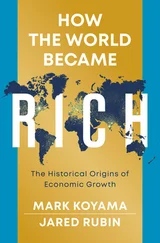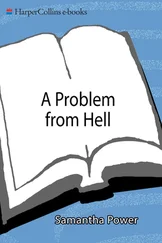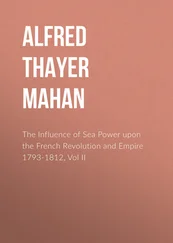Despite the meltdown associated with privatization, “reform” continued as the clarion call of the Chubais-Harvard players. The myth of the Reformers prevailed in the eyes of U.S. officials and opinion makers. In 1997 The Economist described Chubais as “the antithesis of the hatchet-faced apparatchik” and predicted he would be president of Russia by 2010. Chubais flourished as the quintessential enlightened mastermind of the nation’s economic transition. 24
Personalizing Reform
The Harvard Institute’s portfolio of tricks in Russia encompassed not only privatization but also legal reform, capital markets, and the development of a Russian securities and exchange commission. Many of these endeavors depended on changes in law, public administration, or mindsets, and required working with the full spectrum of legislative and market participants, not with just one preapproved group or clan. But, to the detriment of true reform, personalizing bureaucracy and privatizing information —essential arrows in the quiver of the Chubais-Harvard partners’ exclusionary modus operandi—pervaded these reform arenas as well. The Chubais-Harvard players sometimes not only failed to design programs that required broad-based stakeholder participation and support, but also blocked the successful implementation of those that did.
This ranged from the petty, as when the Harvard players declined to work with Stanford University and then managed to maneuver an award from USAID for the same project, to the far more consequential, as when they obstructed reform efforts that originated from outside their approved circle. For instance, when the Chubais-Harvard players failed to receive as many USAID funds as they sought, they blocked legal reform activities in title registration and mortgages—programs that were launched by agencies of the Russian government, according to interviews with USAID-paid consultants and GAO officials. As GAO’s lead investigator looking into the Harvard project told me, the Harvard people wanted “to keep power within their own structure.” This compulsion put the players at cross purposes with their own, and the U.S. government’s, purported aim of fostering markets. 25
Excluding other players often did not serve the cause of true market reform, which would mean including—or at least not excluding—people who just wanted to be participants in Russia’s market system in the making. A case in point is USAID’s showcase effort to reform Russia’s tax system and to establish clearing and settlement organizations (CSOs), an essential ingredient in a sophisticated financial system. Those efforts failed primarily because they were put largely into the hands of the Chubais-Harvard group, which declined to work with other market participants. In Moscow, for example, many Russian brokers were excluded from the process and declined to use the CSO. The GAO called the CSO effort “disappointing.” 26
Personalizing Resources
All around them, people were on the take. The Chubais-Harvard players had enormously lucrative opportunities—the spoils of an unraveling resource-rich state—right under their noses. And they had near-exclusive access to insider information in venues where some of these spoils could be found. They were playing on a new field in which their potential monitors often lacked the information they had, let alone the means to hold them accountable. They could use the information in ways unbeknownst to their sponsors and to the nations that they, when performing official roles, purported to serve. As gatekeepers of access, they could engage in a coincidence of interests—structuring overlapping or ambiguous roles for themselves—and serve their own goals. They could cover it all up by branding their activities as high-minded reform, for how would we know better?
It is precisely the Harvard players’ hold on privileged information and their use of it for personal gain in Russian markets that led them into legal trouble and, allegedly, to open themselves to classic conflicts of interest. In 1997 the U.S. Justice Department began investigating the Harvard project after complaints circulating among on-the-scene consultants and in the U.S. aid and diplomatic community in Moscow came to the attention of the new Moscow USAID director. One of the U.S.-funded assignments of the Harvard advisers was to help create the regulatory infrastructure in the image of Western institutions such as the U.S. Securities and Exchange Commission, one of the functions of which is to detect and prosecute illegal insider trading. But at the same time the advisers were supposedly creating this infrastructure, they invested in the lucrative securities market; equities, aluminum, oil, and other companies (including Gazprom); real estate; and mutual funds. 27These areas “were within the scope of their [Harvard’s] economic and legal advice on behalf of USAID,” according to the U.S. Department of Justice, which brought a $120 million lawsuit against Harvard University, Shleifer, Hay, and their wives (later dismissed from the case) in 2000, following a multiyear investigation into alleged wrongdoing. Justice concluded, “Harvard’s actions, instead of fulfilling their intended purpose of fostering trust and openness in the nascent mutual fund market, in fact involved exactly the type of favoritism and perceived and actual barriers to entry and success that the United States was spending hundreds of millions of dollars to dispel.” 28
The same contradiction between supposed goals of reforms and other goals the players pursued lies at the heart of a suit brought against Shleifer, Hay, and Harvard University by an American mutual funds firm working in Russia. When the company filed suit in fall 2000, Harvard spokesman Joe Wrinn called its claims baseless. Two years later, however, Harvard and its two codefendants quietly settled with the company, agreeing to a payment but denying any misconduct. 29
Through all this, the Chubais-Harvard players were backed by an incurious, and often complicit, American mainstream media. As Russia scholar Stephen F. Cohen observed: “Most journalists writing for influential American newspapers and news magazines believed in the Clinton administration’s crusade to remake post-Communist Russia.” Partly as a result, the Chubais-Harvard players had little trouble spreading their own version of reality in the West. For example, as the unpopular Yeltsin sought reelection after the Communists won the parliamentary election in late 1995, fears of a Communist comeback were stoked to justify privatization at all costs—however inequitable, unpopular, or undemocratic. The Reformers were hailed as heroes. Shleifer, Boycko, and Robert Vishny (Shleifer’s business partner and a professor of economics at the University of Chicago who worked with the Chubais-Harvard team), pushed this happy little story in their book Privatizing Russia . This volume (funded by the Harvard Institute) was found on the desks of many USAID officials. As they told it, a “large class of owners” had been “created”—a claim that was patently untrue. 30
American media and opinion-setters consumed the Chubais-Harvard story. Many U.S. officials also drank the Kool-Aid peddled by Harvard’s reputedly brilliant technical specialists now producing simplistic, rosy narratives. As late as 1997, when the U.S. Justice Department began investigating the Harvard project, the response of USAID officials was telling. “We had even more than usual confidence in them [the Harvard advisers],” said USAID Deputy Administrator Donald Pressley. As one U.S. investigator confided: “The [Clinton administration’s] excuse [for any alleged impropriety] always was: those [Harvard] guys, we need them; they’re the experts.” The players did everything in their power to keep their own dominance and influence intact (as well as that of their Chubais counterparts), investigative attention at bay, and government officials, policymakers, and the mainstream media largely swallowing the prevailing myths. 31
Читать дальше












